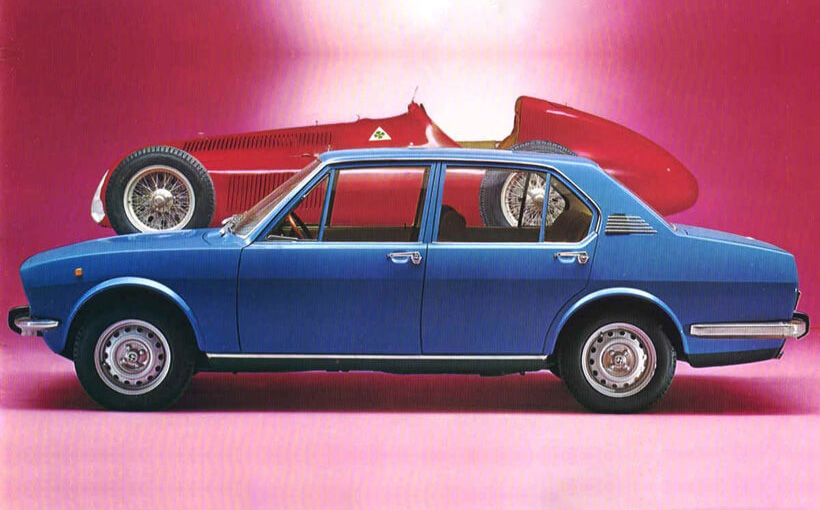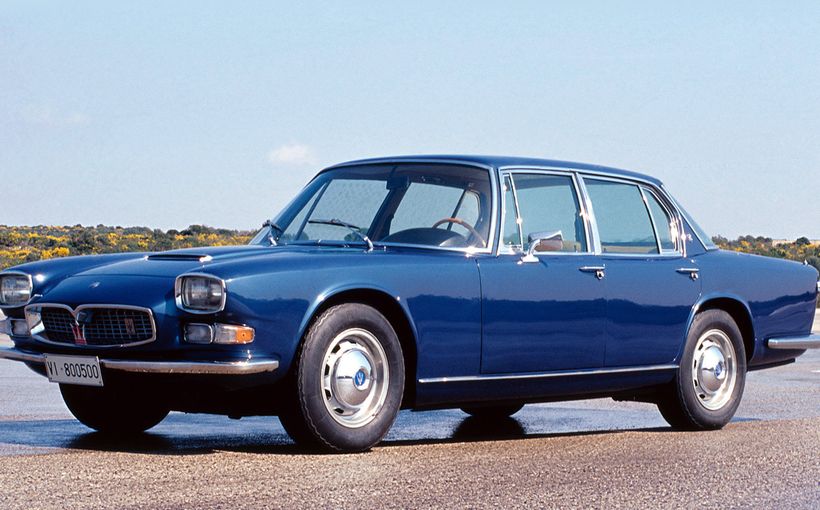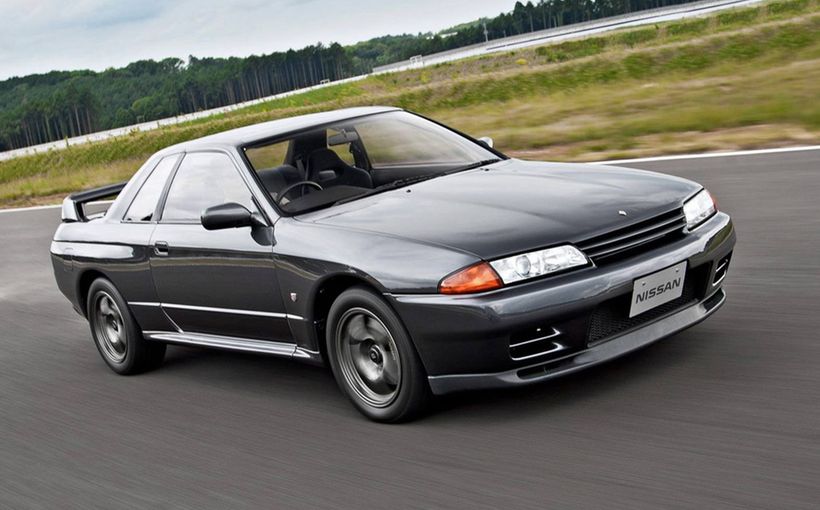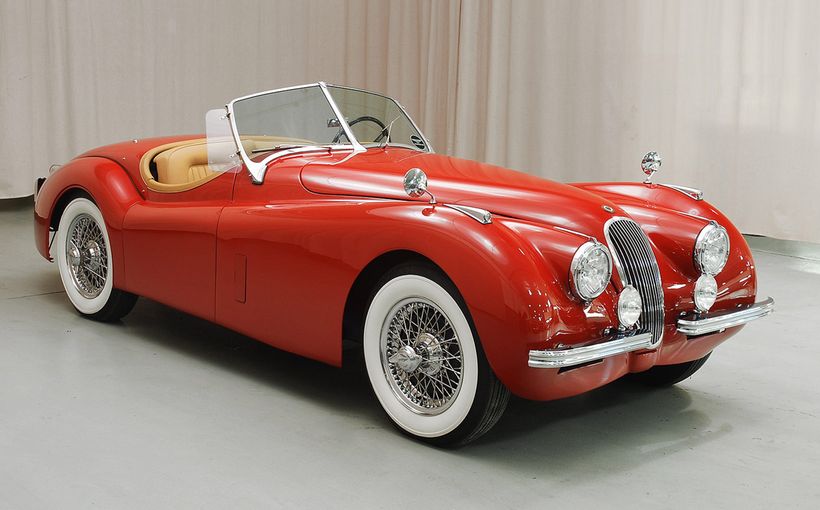Alfa Romeo Alfetta sedan and coupe: Redefining Alfa-naticism

In Arese, Italy in May 1972, just 10 months after the debut of the HQ Holden and less than seven years after BMC delivered its so-called ‘The Car of the Century’ Austin 1800, Alfa Romeo launched the first example of what was to be its new 116-Series range, the Alfetta 1.8 sedan. Some of the motoring journalists considering this Cortina-sized Bertone-designed newcomer would have been bemused at least and even astonished by the company’s boldness in displaying the car alongside the 1951 Model 159 Alfetta open-wheeler which had so patently lent its name to what looked like just another neat early 1970s sedan.
An all-alloy twin overhead camshaft engine was not new to Alfa Romeo’s production cars and neither was a five-speed all-synchromesh gearbox. Even four-wheel disc brakes were unremarkable. But despite the cynicism of some commentators (Road & Track’s April 1973 introduction used the pejorative phrase ‘tenuous grounds’), there was ample justification for (a) daring to showcase the new Alfetta alongside its famous namesake and (b) for recycling the name.

The front-engined rear-drive Alfetta 116 offered perfect 50:50 weight distribution thanks to its adoption of a rear transaxle and De Dion suspension, per the Model 159. By moving the mass of the gearbox and clutch aft the engineers also liberated more space for passengers and luggage. The Dion arrangement conferred advantages of having lower unsparing weight and of keeping the rear wheels vertical at all times.

But it was no simple matter of merely applying technology bred for racing to a road car. The first prototypes displayed marked oversteer – which might have appealed to BMW engineers, who reputedly loved displaying this trait at very high speeds on their test track to win the respect of motoring journalists – but Alfa’s team were determined that the new sedan should display mild initial understeer, the characteristic best suited to the overwhelming majority of non-specialist drivers.
It took many test miles to turn audacious but thoroughly logical theory into practical roadgoing reality.
Additional desirable mechanical developments included the use of rack and pinion steering and mounting of the rear disc brakes inboard in the mode of the Jaguar XJ6.
The Alfetta did not initially replace the Berlina (simply the Italian word for sedan) 1750 and 2000. Despite the 1972 showing, it did not arrive in Australia until July 1974 and was priced at $5,995, which was about $1K more than my father (following my possibly unwise and precocious advice) paid for his 4.2-litre HQ Premier a couple of months later.
Even though cars such as the Datsun 1600 and Fiat 125 had prepared Aussies for the world of high performance four-cylinder sedans, the Alfetta was something else again. Forget the old ‘ton’, which as late as the early 1970s was still vernacular for 100 miles per hour (161 km/h), the Alfetta achieved the metric 180. In a Wheels comparison cheekily headed ‘Is the Alfa Beta?’, the Alfetta effortlessly disposed of the Lancia, whose front-wheel drive made it far slower off the mark, although ultimately almost as fast. As a further point of reference, a Tri-Matic HQ 253 could manage little more than 160, and took at least half a second more to cover the standing 400 metres.

About two and a half years after the 116-Series Alfetta sedan’s international press launch, it was the turn of the Alfetta GT coupe. There were purists who doubted the GT could equal the gorgeous 105-Series 2000 GTV, but Le Mans winner Paul Frere writing in the December 1974 edition of Road & Track rated it as being ‘in a different class’. (Yes, on a track the 105 might have shown the way but try the uneven and sometimes slippery roads of Targa Tasmania and then tell me that a 105-Series is better than a 116; I’ve tried both!)

Despite their employment of ingenious technology in the Alfettas, the Alfa engineers showed less imagination with the passenger accommodation, especially in the GT. While looking for all the world like a hatchback, this variant actually had a conventional boot, which surely amounted to a badly squandered opportunity. But at least it had a real rear seat. The gauges were strangely arranged with the tacho in front of the driver and the rest in the centre. A more conventional layout was adopted in 1983.


In 1977 the Alfa Romeo 2000 GTV replaced the Alfetta GTV and the sedan also got the 2.0-litre engine. The demand imposed by ADR 27A meant that considerable power was robbed from this impressive engine. Even so, it delivered noticeably more low- and mid-range torque than its predecessor. It comes down to individual preferences but I always preferred the 1.8 on both road and track. Despite its modest 5700 rpm, the 105,000-mile 1974 1.8 sedan (with unmodified engine internals) in which I started racing, would rev happily to 7200 rpm. But I never found purpose in taking a 2.0-litre Alfa – whether 105 or 116 – beyond 5800-6000.
The best features of these Alfa Romeos were their engines, steering and dynamics. My own preference handling-wise was always the sedan. I have owned three sedans and two coupes (not including GTV6s, of which more later). The coupes were built on a wheelbase four and a half inches shorter and never felt so well balanced to me. Understeer was stronger and there was a slightly nose-heavy feel never evident in any of the four-cylinder sedans, but the V6s were a different story.
Despite their engineering excellence, those four-cylinder Alfettas were an acquired taste. My first experience came in 1984 and I had never previously driven any Alfa Romeo. This was an Alfetta GCL test car. The GCL stood for Gold Clover Leaf and denoted a higher level of standard equipment. The superb polished wooden rim of the three-spoke steering wheel made an almost overwhelming first impression and the exhaust note made a one-two, but disappointments quickly followed. I could not credit the lack of power steering. Around inner Sydney it was Heavy and there was marked understeer. The gearchange was also heavy and yet required a gentle touch; graunches were on offer. Power felt only average, 1984 being a full decade since the Alfetta’s Australian debut. The GCL boasted the Alfa Check system but in my time with the GCL it gave only false alarms. The power window switches were located in a roof-mounted console and worked counter intuitively. In short, I acquired a taste for the steering wheel which was rather like the Momo fitted to the BMW 3.0S I owned at the time but not for the rest of the car.
So I reckoned I’d resisted whatever allure the fabled Alfa Romeo marque might promise. Wrongly, as it happened, but I still had maybe three or four months to believe I was safe from adding yet another automotive brand to my fat lexicon. Then, in the late winter of the same year – 1984 turned out to be the year of acquiring the lifelong Alfa taste – real Alfas, I mean, not 33s and 156s, not even the 2000s Giulietta – Peter Robinson asked me to join the testing team in a comparison between the new Nissan 300ZX and its rivals. These were the Mazda RX-7, Toyota Supra (the Celica-based first one), the Mitsubishi Starion and the Alfa GTV6.
It only took 10 seconds behind the wheel of the Alfa before I had fallen in love for the rest of my days. That exhaust!

I got to write about this response:
I am ashamed of my own perversity. From the moment I tried to get comfortable behind the Alfa’s beautiful steering wheel, I knew that this car had far too many faults to be taken seriously. But that’s the price you pay for choosing an Alfa.
The damnable part about it is, I probably would. Despite everything.
With so many faults, you couldn’t recommend an Alfetta GTV6 to anyone but yourself.
Let logic prevail, then. The Mitsubishi Starion will drive around the Alfa, assuming it's driver has mastered the power steering. You could choose this car for the perfection of its compromises. Compromises? Well it’s not a sports car like the RX-7. Neither is it too big and sedan-like in the manner of the Supra and the 300ZX.
So there’s my entirely subjective summary. When your heart says Milano but your head says Mitsubishi.
Then I was invited on my first overseas trip – to Italy – to represent Wheels on a Fiat launch. This was also the occasion of the 1984 Turin Salon. The Turin Salon was a display of glamour, the like of which I had never experienced. And there at the heart of it was the Alfa Romeo stand, a brace of identical gold 90s forming its centrepiece. The GTV6 sedan, I thought.

A year or so later, after testing a 90 extensively in and around Sydney and looking much more eagerly for its virtues than its failings, I decided that despite having fallen in love with the GTV6 I wanted the more modern and luxurious sedan. Money was the usual insuperable challenge. So I bought myself a consolation prize in the guise of a well-worn 1974 Alfetta in Beech (a lovely and so-Italian deep burgundy) with ripped beige vinyl trim. It cost me $2,700.
In 1987 when I finally decided to go circuit racing, I thought this car might take the battle up to the 10A-powered Mazda RX-3s that prevailed in the sub-2.0-litre class of the NSW Street Sedan Championship. There was also a solitary Triumph Dolomite Sprint (HYPERLINK: http://club.shannons.com.au/club/news/1975-1976-triumph-dolomite-sprint-this-dolomite-needed-the-mighty-dollar/). But despite its far superior braking and better handling, the Alfa was just outpowered. My best qualifying position was fifth (at Oran Park and always worse at hilly Amaroo Park) and my best result was probably more like eighth or tenth. But how I loved that car.
The 90 marked a turning point for Alfa before the even bigger – and reversed in 2016 – move to make all its cars front-drivers. This was Alfa Romeo’s first car with power steering. It was a great system.

Eventually I got my first 90. In the end I got the world record outside an Alfa dealership, by owning six of ‘em, three modified for racing. The 90 was too soft and too tall in its gearing, except for the Super variant which shared the softness but got more rational gearing for the modest 117 kW on offer and the poor mid-range torque (in curious contrast with the 2.0-litre four-cylinder Alfettas). My first 90 proved slower around the late much lamented Oran Park short circuit than my Alfetta before it was prepared for racing!
It didn’t take me long to realise I preferred the GTV6 with its macho character to the soft 90. Mind you, tricked up for circuit work, the 90 actually deserved to be called a GTV6 sedan. By the time the first Targa Tasmania loomed on the coming year’s calendar I had no doubt about what car I wanted to enter. Although 90s were cheap, it had to be a GTV6, lowered, with the exhaust opened out, the torsion bars wound down at the front and a set of beautiful wheels. Bellissimo! I finished up buying the very same silver car I had owned 18 months or so earlier.

Sadly, I later sold it. (The 1974 105 2000 GTV in which I came third in class in 1994 was, frankly, no match in dynamics and braking for the GTV6.)
I never bought a 75, but it wasn’t much different from the 90 except in looks, Ermanno Cressoni having given it a wildly extravagant wedge. The 75 should eventually prove collectible, being Alfa Romeo’s last rear-wheel drive car until 2016. Serious weirdness was going on at Alfa because the 75 was almost identical in size to the 90 and both came with a clutch, although there was eventually an automatic version of the 75, an afterthought appeasement of those unmacho non-Italians, if ever I’ve seen one.
There was a time I thought I’d never be without an Alfa Romeo but I was wrong. I’ve owned many including three 105s (two 2000 GTVs and one Giulia Super), but the absolute standout for me, the truly wondrous work-of-automotive-art original is the GTV6 (especially the one I drove to third in class in the 1992 Targa Tasmania, against modern rivals), followed by the Alfetta 1.8.
n summary, the early Alfettas rusted appallingly despite their engineering brilliance, the 2.5-litre V6 is perhaps the most charismatic engine I’ve met, and the GTV6 with its lack of power steering and that achingly evocative bonnet bulge is one of comparatively few cars that feels utterly alive in your hands. As we move further into the world of electric power steering, – to say nothing of driverless vehicles! – it will be more difficult to recall just what that phrase ‘alive in your hands’ means when it comes to motoring.










